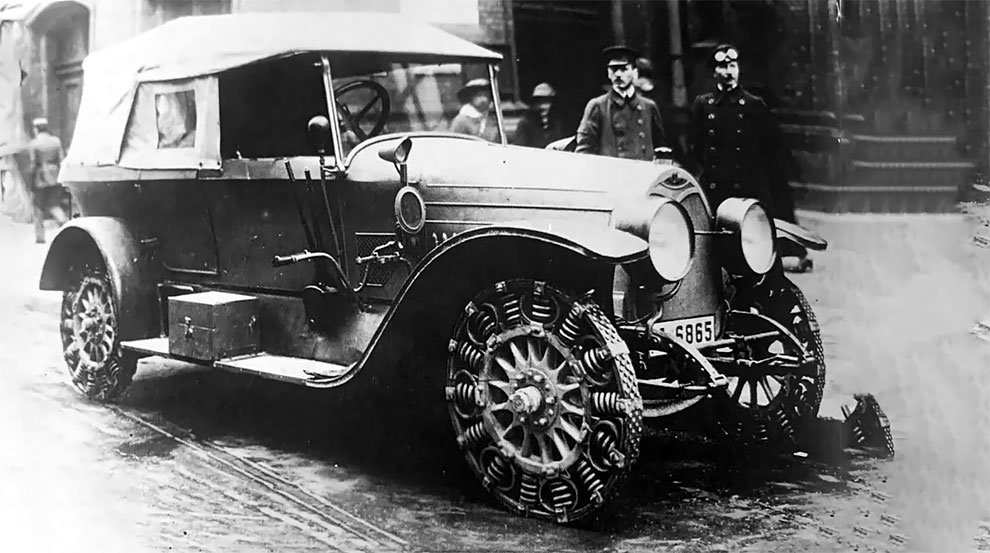
Let’s explore the captivating history of the tire, which gained momentum with the invention and popularization of tires in 1895, thanks to Michelin L’Éclaire – the pioneering vehicle to be equipped with them.
h/t: vintag.es

The development of modern tires owes its existence to two revolutionary advancements – Charles Goodyear’s rubber vulcanization technique in 1839 and Dunlop’s creation of the inner tube in 1887. Rubber and air, the two essential elements, have played a crucial role in shaping the contemporary tire industry.

There is a lesser-known aspect in the history of tires that may determine its future. In the early 20th century, the shortage of rubber caused by World War I created challenges in inflating tires with air. To tackle this problem, the Germans ingeniously developed a steel spring tire for a vehicle named Protos in 1916. This innovation proved to be more dependable than rubber tires and was quickly prioritized for use in military vehicles. The tire’s narrative not only spans across time but also serves as evidence of human creativity in overcoming obstacles and anticipating what lies ahead.





